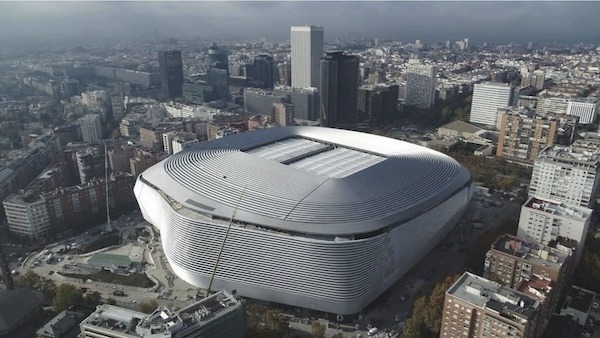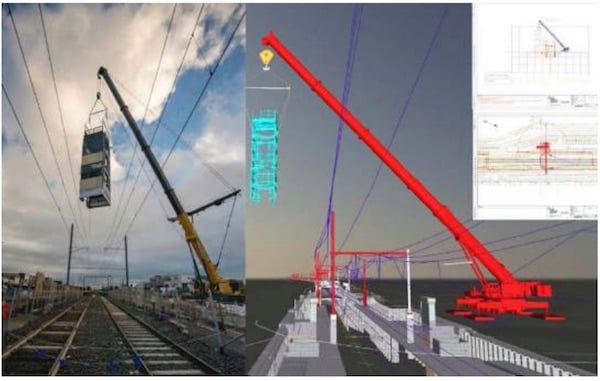
Image source: Tierney/stock.adobe.com.
Design engineering has always been subject to the influence of technology. From etchings on stone tablets to pen and paper blueprints, to the invention of CAD and digital tools, engineering processes have undergone considerable changes that impact how we design and construct our built world.
But in the last few years, the momentum with which AI technologies have reshaped the contours of our design processes is astonishing. We stand on the precipice of an automation revolution – one that has already transformed almost every other major industry. Automation is redefining the way we conceive, plan, and execute our designs for critical infrastructure projects.
When they first came to be, concepts like generative design and AI-powered design were relegated to a somewhat obscure corner of the engineering world, operating as useful, albeit niche tools in very early adopter’s toolkits. Fast forward to today, these tools are used in a growing percentage of preliminary design processes — especially in sectors such as building construction and civil infrastructure.
Bridging the Gap: Collaboration between AI and Humans
While AI and automation promise tremendous benefits, there are still challenges—particularly, misconceptions around the use and adoption of these tools.
One primary concern is the displacement of traditional design engineering roles. As automation takes over, designers often question their place and value within the industry. But it’s essential to note that AI doesn’t replace the human touch— it enhances it. Automation offers efficiency, but intuition, creativity, and human-centric design approaches remain in the designer's domain.
Many designers also misinterpret AI as a standalone entity rather than a collaborative partner. The effectiveness of AI is exponentially expanded when combined with human expertise. For example, generative design can offer a multitude of potential solutions to shave time and cost (and mundane, repetitive work!) from infrastructure projects. But the discernment needed to consider aesthetics, cultural contexts, and environmental implications and then choose the most appropriate solution still lies with the human designer.
This symbiotic relationship can lead to tremendous innovation. Human engineers can push the boundaries of what's feasible by using their AI sidekick as a sounding board, sanity check, or ‘doer’ of what is often viewed as grunt work (such as copy-pasting, formatting, revising, and checking for errors).
Real-world Applications: Success Stories
Many AEC/EPC firms, asset owners, and manufacturing organizations have integrated AI into their engineering workflows, largely focused on two primary applications:
Digital Twins: A digital twin is a virtual replica of a physical entity. Whether it's a building, interconnecting infrastructure, or an entire city, digital twins allow designers to simulate, analyze, and optimize their designs in real time. Digital twins can also enable asset owners and those operating or maintaining infrastructure to combine the digital design model with a higher-fidelity operational model that is regularly updated (in some cases, in real time) to show how the asset should operate given how it was originally designed. This demonstrates how the actual infrastructure can and can’t operate by comparing the real-world data with the optimal digital design.
Green building design is one example of the digital twin concept in practice today. Leveraging AI, design engineers can rapidly model buildings that optimize sunlight, reduce energy consumption, and manage water more efficiently, without spending countless hours trying to optimize designs by hand. An AI-powered design approach can also consider the current (or future) operating parameters of the buildings. Once constructed, engineers and maintenance professionals can then use the digital twin to simulate the impact of changes to the baseline design and better understand how to optimize building operations in real time.
Generative Design: Beyond traditional CAD systems, generative design leverages AI to propose a myriad of design options based on specific input parameters. It empowers designers by offering an effectively unlimited number of outcomes early on in design processes, allowing the focus to shift from drafting to optimizing and decision-making.
Urban planners deploy generative design with great success. Several cities have utilized generative design to simulate what a city might look like given future scenarios such as population growth, residential building construction, the addition of green space into the city, and other aspects of communities. This enables a holistic understanding of how various infrastructural changes can impact traffic, pollution, and even socioeconomic activities.
The Future: Where Do We Go from Here?
While we've seen significant strides in the integration of AI in the design process, we’ve only just begun. The next decade promises even more profound changes, especially considering how advancements in AI have transformed almost every other major industry. I anticipate more emphasis on sustainable designs aided by AI, hyper-realistic simulations that can predict wear and tear on structures over time, and even AI-assisted public consultations where citizen feedback is integrated into urban design projects.
I also see a future where designers guide the evolution of AI tools. By understanding the intricacies and requirements of design processes, designers can influence how these tools are shaped and take their profession to the next level.
As we navigate this seismic shift brought about by the automation revolution, we must remember that at the heart of every design are humans thinking creatively about the application. AI is a tool, and like any tool, its true potential is unlocked by the hands that wield it.
Adam Tank
Adam Tank is the Co-Founder and Chief Customer Officer of Transcend, a SaaS provider of generative design tools for critical infrastructure. He holds over 15 years of experience in the water and energy industries.
View All Articles




Searching for more information about Architecture, Infrastructure, and Construction?
Click here!